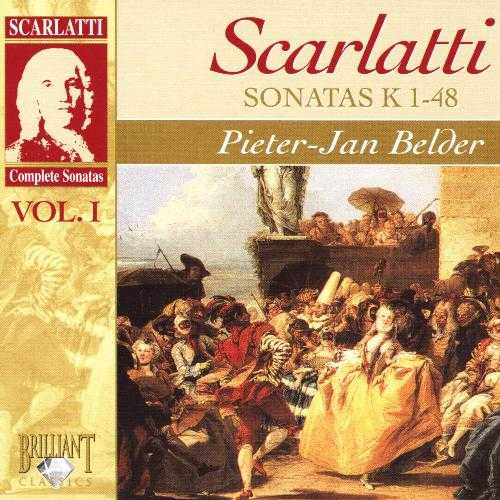
I don’t remember the name of that person who send it to me some time before.
All thanks fly to anonymous
Performer: Peter-Jan Belder
Composer: Domenico Scarlatti
Audio CD
Number of Discs: 36
Format: FLAC (tracks)
Label: Brilliant Classics
Size: 13.9 GB
Recovery: +3%
Scan: yes
For just a second of folly, I fantasized listing each of the 555 sonatas individually in the headnote and writing at least a sentence or two about each of them in the body of the text. The moment passed quickly, however, when I considered the likelihood that our music editor would not share my sense of perverse amusement. If there were 666 sonatas, imagine what fun one could have with that. But alas, there are only 555, at least that we know of. So, where does one start? Well, at the beginning, I suppose.
This is not the first time such a project has been undertaken. Between 1984 and 1985, American born harpsichordist Scott Ross recorded the complete canon for Erato and Radio France. It is still available, now on Warner Classics, for a mere $265.00. The current offering from Brilliant Classics was in the making for eight years, from 2000 to 2007, and is being sold for $100.00 at arkivmusic.com. Even those who have enjoyed Scarlatti’s sonatas in smaller doses both on harpsichord and piano may blanche at the prospect of over 38 hours worth of these miniature keyboard masterpieces.
An exact contemporary of J. S. Bach and Handel, the Italian-born Domenico Scarlatti (1685–1757) spent much of his life in Spain and Portugal. Though his dates fix him as a Baroque era composer, it may be a bit too glib to say that Scarlatti’s keyboard œuvre is to the Italian-Spanish Baroque what Bach’s Well-Tempered Clavier and Clavierübung is to the German Baroque and François Couperin’s Pièces de clavecin is to the French Baroque. More so than his German and French counterparts, Scarlatti laid the groundwork for the early Classical sonata; and aspects of his style, particularly some of his more audacious harmonic excursions and daring dissonances, did not go unnoticed by Clementi, Mozart, and even Beethoven.
Unlike many other admired composers, Scarlatti did not “progress” in the way we think of a creative artist undergoing ever-evolving and deepening modes of expression. Not a single manuscript of any of these sonatas exists in Scarlatti’s hand, so it is impossible to know exactly when they were written, in what order, or even if 555 are all of them. Based on Alessandro Longo’s edition of the sonatas that appeared between 1906 and 1908, famed harpsichordist Ralph Kirkpatrick prepared his own catalog and established a numbering system around 1950 that is still in use today and is reflected by the K numbers used in this set. (Kenneth Gilbert published a later, critical edition in the early 1980s, which was used by Scott Ross in his recordings.) But between K 1 and K 555, though you will hear bountiful cleverness, thrilling feats of keyboard legerdemain, and a seemingly inexhaustible supply of imagination, you will hear little if anything in the way of stylistic or formal evolution.
Granted, no two sonatas repeat themselves or are ever the same (an amazing accomplishment in itself), yet all of them are ultimately and essentially alike: in the main, single movement, allegro, binary structures in which the first and second halves are repeated. Of those I listened to—and no, I didn’t listen to all 38 discs; if I had, this review wouldn’t be forthcoming until sometime in 2010—Belder observes the repeats. In some number of cases, (a small percentage of the overall total) a sonata will exhibit an open-ended as opposed to a closed-ended form—i.e., its second half material will not be related to its first half. There are also a handful of non-binary movements that are single-span fugues. The majority of the sonatas are in minor keys, and at least eight of them are known to be for other instruments or instrumental combinations—three for organ and five for harpsichord with accompanying parts. These latter you will hear in the K 81 and K 88–91 sonatas with Rémy Baudet on Baroque violin and Frank Wakelkamp on Baroque cello. Of the three sonatas intended for organ, I counted only one that Belder actually plays on an organ, K 328. On the other hand, for variety, spread between discs 22 and 27, he plays several of the sonatas on a fortepiano. As noted, Scarlatti, it seems, was not overly fond of slow movements, a problem that beset Charles Avison when he thought to conjoin a number of these single movement sonatas in a set of concerti grossi. Nonetheless, sprinkled throughout the set are some beauties.
Concerning the instruments, Pieter-Jan Belder has this to say: “For this recording, I’ve made use of every type of harpsichord I could lay my hands on. I don’t believe it bothered anybody in Scarlatti’s time whether the instrument used was English, French, Flemish, German, Portuguese, or Italian. Scarlatti himself had many types of harpsichord and (small) fortepianos at his disposal. Nevertheless, I have generally given preference to the Italian form of the instrument, as Scarlatti was an Italian/Spanish composer.” Scott Ross in his complete survey of the sonatas also used a number of different instruments, but interestingly, preferred copies of the French-style double-manual harpsichords.
The Brilliant Classics set is handsomely produced. The discs come packaged in their own individual sturdy cardboard envelopes, the backs of which annotate the specific instruments played in each sonata. The included 27-page booklet with a lengthy and scholarly essay authored by Clemens Romijn covers all aspects of Scarlatti’s life and works, a discussion of the instruments in the composer’s lifetime, and a personal note from Pieter-Jan Belder. The CDs and booklet come housed in a hinged, heavy-duty, black cardboard coffin, about the size of a box you would bury your pet hamster in when it goes to rodent heaven.
Many readers, even the really serious collectors among them, I suspect will be content to have their Scarlatti sonatas meted out in smaller portions. Remember though that no one is expected to sit down and listen to all 38 discs without a potty break or two. Think of this as a long-term listening project. Pieter-Jan Belder has done an enormous service to Scarlatti, and his playing is never less than alive, fresh sounding, and thoroughly engaged in the music’s acrobatics and gymnastics. Bravo to Belder and Brilliant Classics. Very strongly recommended.
FANFARE: Jerry Dubins
belder_scarlatti_keyboard_sonatas02.rar – 376.2 MB
belder_scarlatti_keyboard_sonatas03.rar – 420.7 MB
belder_scarlatti_keyboard_sonatas04.rar – 459.9 MB
belder_scarlatti_keyboard_sonatas05.rar – 362.4 MB
belder_scarlatti_keyboard_sonatas06.rar – 384.6 MB
belder_scarlatti_keyboard_sonatas07.rar – 394.1 MB
belder_scarlatti_keyboard_sonatas08.rar – 402.6 MB
belder_scarlatti_keyboard_sonatas09.rar – 426.2 MB
belder_scarlatti_keyboard_sonatas10.rar – 373.6 MB
belder_scarlatti_keyboard_sonatas11.rar – 451.8 MB
belder_scarlatti_keyboard_sonatas12.rar – 354.1 MB
belder_scarlatti_keyboard_sonatas13.rar – 414.1 MB
belder_scarlatti_keyboard_sonatas14.rar – 454.3 MB
belder_scarlatti_keyboard_sonatas15.rar – 378.1 MB
belder_scarlatti_keyboard_sonatas16.rar – 400.2 MB
belder_scarlatti_keyboard_sonatas17.rar – 383.9 MB
belder_scarlatti_keyboard_sonatas18.rar – 356.0 MB
belder_scarlatti_keyboard_sonatas19.rar – 441.6 MB
belder_scarlatti_keyboard_sonatas20.rar – 416.0 MB
belder_scarlatti_keyboard_sonatas21.rar – 473.2 MB
belder_scarlatti_keyboard_sonatas22.rar – 430.8 MB
belder_scarlatti_keyboard_sonatas23.rar – 330.0 MB
belder_scarlatti_keyboard_sonatas24.rar – 387.7 MB
belder_scarlatti_keyboard_sonatas25.rar – 343.2 MB
belder_scarlatti_keyboard_sonatas26.rar – 458.3 MB
belder_scarlatti_keyboard_sonatas27.rar – 453.2 MB
belder_scarlatti_keyboard_sonatas28.rar – 484.4 MB
belder_scarlatti_keyboard_sonatas29.rar – 446.4 MB
belder_scarlatti_keyboard_sonatas30.rar – 459.2 MB
belder_scarlatti_keyboard_sonatas31.rar – 434.1 MB
belder_scarlatti_keyboard_sonatas32.rar – 454.2 MB
belder_scarlatti_keyboard_sonatas33.rar – 431.1 MB
belder_scarlatti_keyboard_sonatas34.rar – 397.4 MB
belder_scarlatti_keyboard_sonatas35.rar – 383.4 MB
belder_scarlatti_keyboard_sonatas36.rar – 265.1 MB
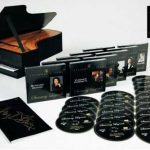
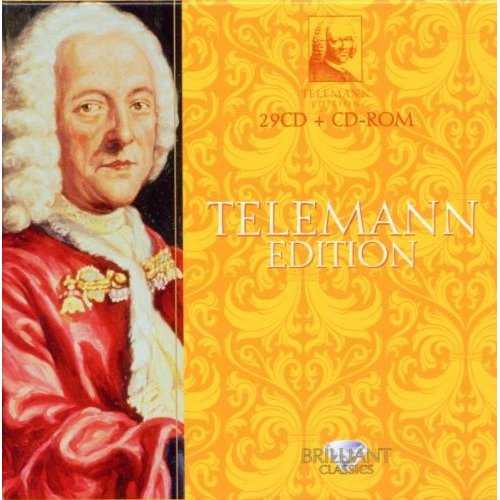
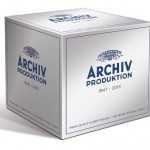
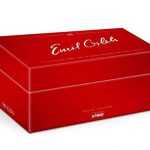
Alongside Bach & Handel. it’s good to have these recordings, which are well recorded and allow detail to be heard. Great post, thanks
Hey Whatever, Merry Christmas to you!
I am trying to find you in the messenger list and I can’t. Could you send me a message so I can reply? :) Thanks!
Dont listen to the above foobar2000 is by far the best. Also allows you to create a single file disc with an embedded cue file so you double click it and all songs open :)
Thank you very much.
Thank you.
Thanks from Scarlatti-fun :roll:
Hi, how do I play a whole CD together once they are extracted (using jzip). All I can do now, with any software I have is play one track/sonata at a time. Thanks. And many software will not play .FLAC files. Thanks
Use VLC media player free download).
Play the cue file in the directory. This will automatically put all tracks in VLC and start playing.
Else, you select all tracks with the mouse and select open with VLC.
You may use cuetools, it’s other good tool for manage audio w. cue files.
Good luck.
u can use km player. it can play many of formats….
I suggest u to try the Medieval CUE Splitter for splitting the CD. u can download it.
Good luck
thank you very much, great post.